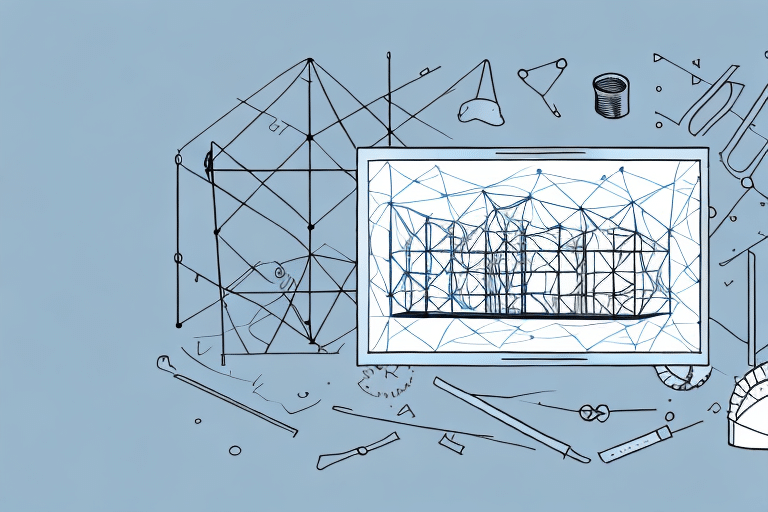Importance of Building In-house Capacity
In today's competitive business environment, building in-house capacity is essential for sustained success and growth. By developing the skills, expertise, and resources within your organization, you ensure that your team is equipped to navigate the ever-changing business landscape. This investment leads to a more motivated and engaged workforce, fostering innovation, reducing turnover, and increasing overall productivity.
According to a Forbes article, companies that prioritize in-house development report a 20% higher employee retention rate and a 15% increase in productivity. Additionally, maintaining an in-house team provides greater control over project management, budgets, timelines, and quality control, ensuring that your business objectives are met efficiently.
Identifying Skills and Expertise Needed
Conducting a Skills Gap Analysis
Identifying the specific skills and expertise your organization needs begins with a comprehensive skills gap analysis. This involves reviewing previous projects, benchmarking against industry standards, and assessing the current capabilities of your team. Tools like SHRM's skills gap analysis toolkit can aid in this process.
Engaging Employees in the Process
Involving employees through surveys and focus groups provides valuable insights into the skills they feel are lacking and areas where they seek growth. This collaborative approach not only identifies training needs but also promotes a culture of continuous improvement and employee engagement.
Future-proofing your organization requires staying abreast of industry trends. For instance, the rise of artificial intelligence and machine learning necessitates new competencies. According to a McKinsey report, up to 375 million workers may need to switch occupational categories and learn new skills by 2030.
Benefits of In-house Capacity Building
Cost Efficiency
While outsourcing can provide short-term solutions, building an in-house team reduces long-term costs associated with external agencies or contractors. In-house teams offer better cost predictability and eliminate the premium costs often charged by external providers.
Enhanced Innovation and Quality Control
An in-house workforce fosters a culture of innovation as team members are more invested in the company's success. This leads to higher quality outputs, as the team has a deeper understanding of the company's standards and objectives.
According to a Harvard Business Review study, companies with strong in-house teams experience a 25% increase in project success rates compared to those relying heavily on outsourcing.
Strategies for Developing Your Team
Comprehensive Training Programs
Implementing a blend of on-the-job training, mentorship, and formal training sessions ensures that employees continuously develop their skills. Tailored training programs address specific organizational needs and foster a workforce prepared to meet future challenges.
Creating a Culture of Continuous Learning
Encouraging employees to take on new challenges and responsibilities not only enhances their skill set but also increases job satisfaction and engagement. A culture that prioritizes learning and development leads to higher retention rates and a more adaptable team.
Recruiting and Retaining Talent
Effective Recruitment Strategies
Developing clear job descriptions and utilizing targeted recruitment channels are crucial for attracting the right talent. Emphasizing your organization’s commitment to growth and development can make your job postings more attractive to prospective employees.
Fostering Diversity and Inclusion
Building a diverse team brings varied perspectives and ideas, enhancing problem-solving and innovation. Implementing inclusive recruitment practices ensures that your team reflects a wide range of backgrounds and experiences.
Retention Plans
Developing comprehensive retention strategies, including competitive compensation, career advancement opportunities, and a positive work environment, is essential for maintaining a stable and committed workforce.
Measuring Success and Overcoming Challenges
Setting Performance Metrics
Establishing clear performance metrics aligned with organizational goals allows you to evaluate the effectiveness of your capacity-building efforts. Regular performance reviews and feedback loops help in fine-tuning strategies and addressing areas that need improvement.
Addressing Common Challenges
Building in-house capacity comes with challenges such as resistance to change, resource constraints, and maintaining effective communication. Developing strategies to mitigate these challenges, such as fostering open communication and securing executive support, is crucial for success.
Investing in Technology and Tools
Leveraging the right technology and tools can significantly enhance your team's capabilities and efficiency. Identifying the necessary tools, allocating a budget for technology investments, and providing adequate training ensures that your team can utilize these resources effectively.
According to a Gartner report, businesses that invest in the latest technologies see a 30% increase in operational efficiency and a 20% boost in employee productivity.
Conclusion
Building in-house capacity is a strategic investment that drives long-term organizational success and growth. By focusing on team development, effective recruitment, and leveraging the right technologies, your organization can create a motivated, skilled, and resilient workforce. Implementing these strategies will lead to increased innovation, reduced turnover, higher productivity, and ultimately, greater revenue and market share.








